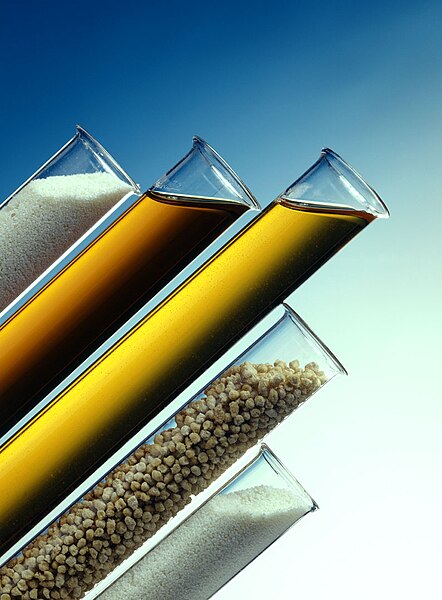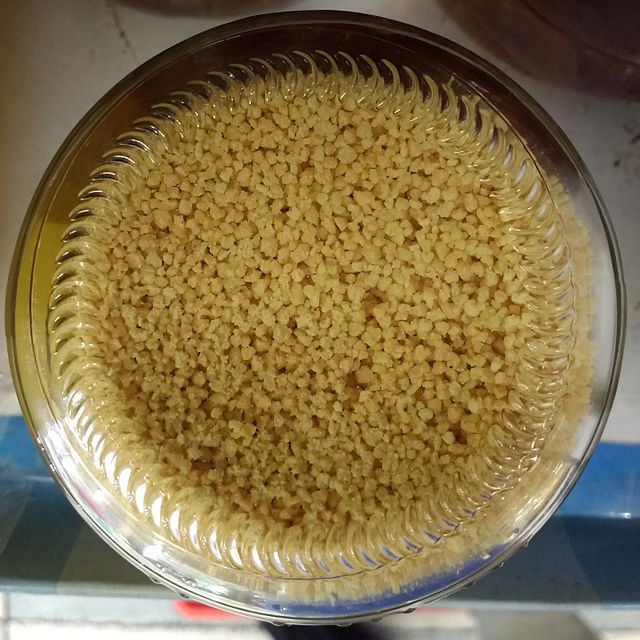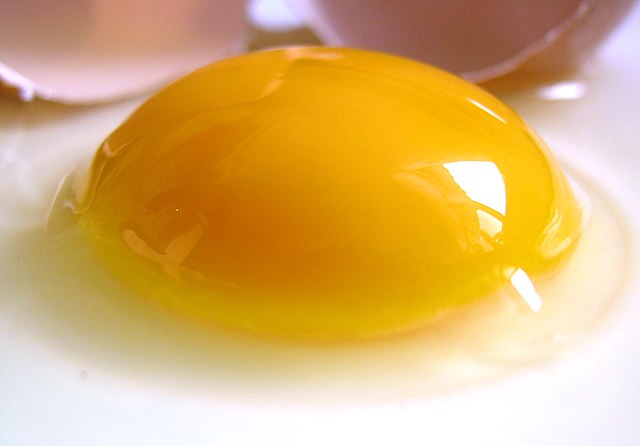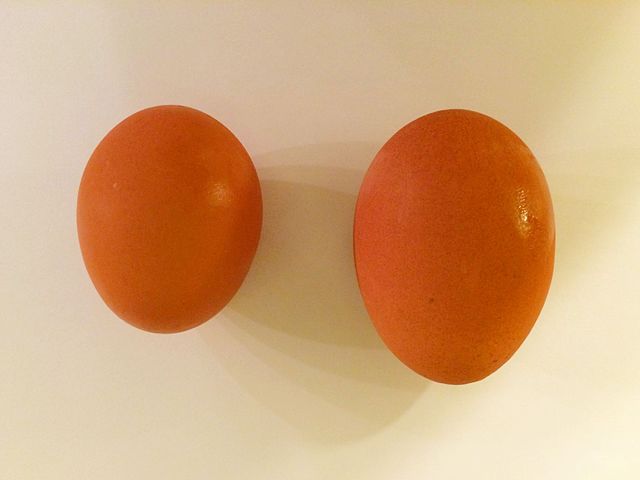Lecithin is a generic term to designate any group of yellow-brownish fatty substances occurring in animal and plant tissues which are amphiphilic – they attract both water and fatty substances, and are used for smoothing food textures, emulsifying, homogenizing liquid mixtures, and repelling sticking materials.
The different forms of lecithin – powder, two different concentration liquids, granular and powder lecithin
Soy lecithin for sale at a grocery store in Uruguay
Among animals which produce eggs, the yolk is the nutrient-bearing portion of the egg whose primary function is to supply food for the development of the embryo. Some types of egg contain no yolk, for example because they are laid in situations where the food supply is sufficient or because the embryo develops in the parent's body, which supplies the food, usually through a placenta. Reproductive systems in which the mother's body supplies the embryo directly are said to be matrotrophic; those in which the embryo is supplied by yolk are said to be lecithotrophic. In many species, such as all birds, and most reptiles and insects, the yolk takes the form of a special storage organ constructed in the reproductive tract of the mother. In many other animals, especially very small species such as some fish and invertebrates, the yolk material is not in a special organ, but inside the egg cell.
The yolk of a chicken egg
Diagram of a fish egg; the yolk is the area marked 'C'
Comparison of an egg and an egg with a double-yolk (closed)
Comparison of an egg and an egg with a double-yolk (opened)






